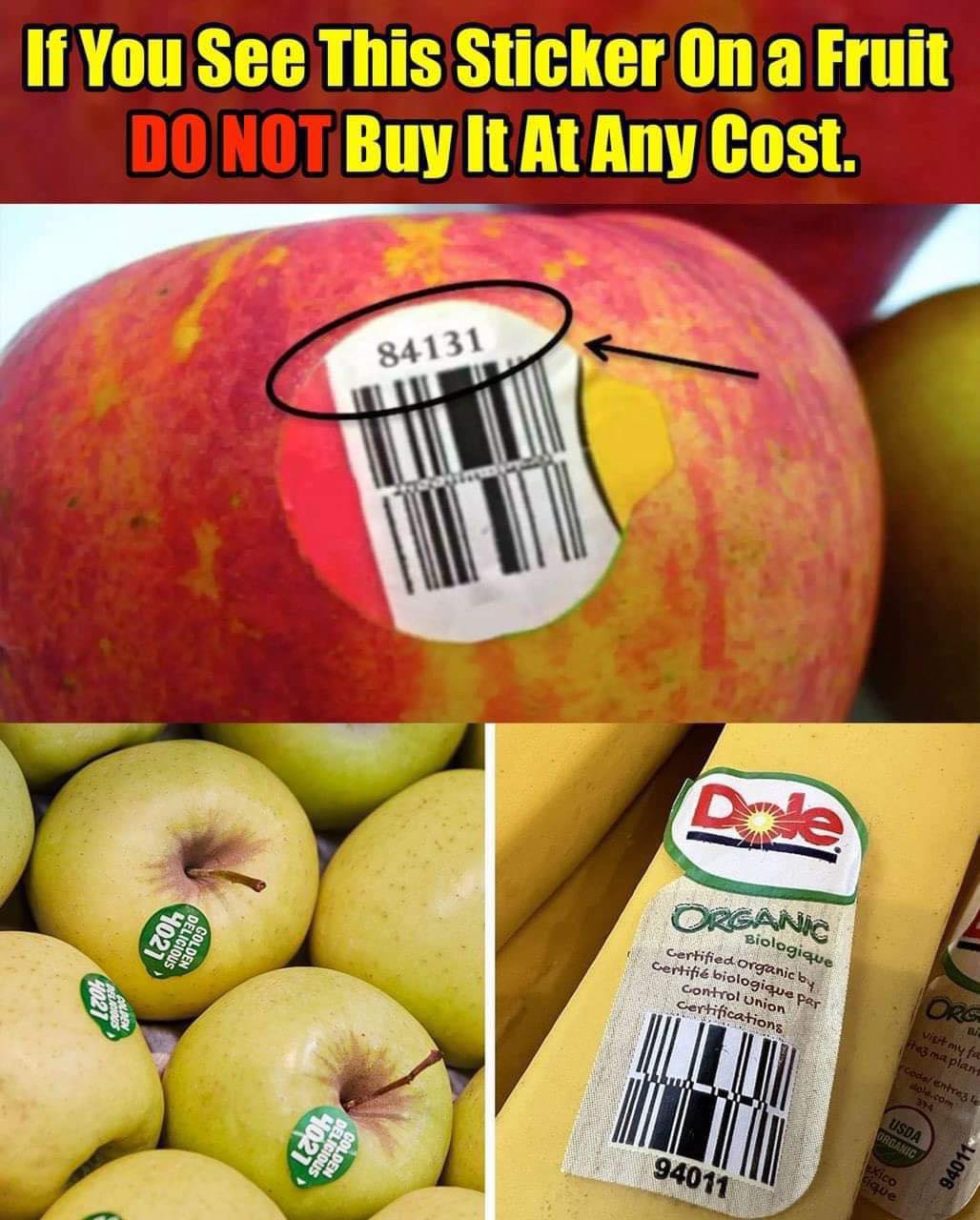When grocery shopping, most of us stick to checking brands and expiration dates, ensuring we get what we trust. But when it comes to fruits and vegetables, decisions are often based on how fresh, ripe, or visually appealing they look. Did you know, though, that those tiny stickers on your produce carry much more information than just pricing or branding?

These little stickers often display codes that reveal crucial details about how the produce was grown. Let’s dive into what those numbers mean and how they can help you make smarter, more informed choices during your next grocery run.
Understanding the Numbers on Fruit Stickers
What It Means When It Starts with the Number 9
If you’ve ever noticed a five-digit code on a fruit sticker that begins with the number 9, you’ve got an organic item in your hands. Organic produce is grown using methods that avoid synthetic pesticides, chemical fertilizers, and genetically modified organisms (GMOs). Farmers who grow organic produce prioritize natural methods, including crop rotation and composting, to nurture the soil and promote sustainability.
Choosing organic is often about more than avoiding chemicals—it’s about supporting environmentally friendly farming practices and reducing your exposure to synthetic additives. If you’re someone who values eco-conscious living and healthier options, spotting a sticker code beginning with 9 is a clear sign you’re making a greener choice.
What It Means When It Starts with the Number 8
On the other hand, if the code on the sticker starts with the number 8, the fruit is genetically modified (GMO). Genetic modification involves altering the DNA of a crop to enhance certain traits, such as resistance to pests, increased nutritional content, or improved shelf life. This technology has revolutionized farming, allowing crops to thrive in harsh conditions or offer higher yields.
While GMOs bring significant benefits, they remain a topic of debate. Supporters argue that genetically modified foods can help combat global hunger, reduce food waste, and improve farming efficiency. Critics, however, raise concerns about potential health risks, including allergic reactions, and the environmental impact of altering natural ecosystems. The long-term effects of consuming GMO products are still under research, leaving some consumers wary.
Here are a few examples of commonly known GMO fruits:
- Papayas
- Apples
- Plums
- Strawberries
- Grapes
Understanding these codes allows you to make a conscious decision based on your personal preferences or dietary concerns.
Why These Numbers Matter
The numbers on fruit stickers aren’t just random—they’re a window into how your produce was cultivated. For shoppers who prioritize sustainability, organic farming, or GMO-free diets, these codes are incredibly helpful. They empower you to make choices that align with your values, whether those are centered around health, environmental impact, or ethical considerations.
By paying attention to these labels, you can confidently select the produce that fits your lifestyle. Whether you want to avoid synthetic chemicals or support farmers using natural methods, these numbers make navigating the produce aisle a little easier.
Quick Reference Guide to Fruit Sticker Numbers
To make it simple, here’s how to decode the codes:
- Starts with 9: Organic produce
- Starts with 8: Genetically modified (GMO) produce
This quick guide can transform how you approach your grocery shopping, helping you pick produce with intention.
How to Make Better Choices
Next time you’re strolling through the produce section, don’t just grab the first apple or bunch of bananas that catches your eye. Take a moment to check the sticker. These little numbers can offer insights into whether the fruit was grown organically, modified genetically, or cultivated using conventional methods.
Are you committed to eating organically grown produce to minimize your exposure to pesticides? Or are you cautious about GMOs due to ongoing health debates? The information is right there in front of you. By learning to decode these stickers, you gain the ability to make more informed decisions about what you put on your plate.
Moreover, paying attention to fruit sticker numbers can also help support farming practices that resonate with your values. Whether it’s reducing environmental harm or promoting food security, your choices as a consumer make an impact.
The Bottom Line
The stickers on fruits and vegetables might seem like minor details, but they hold the key to better, more informed grocery shopping. Knowing what those numbers mean allows you to align your purchases with your health goals, environmental concerns, or ethical beliefs. So, the next time you’re browsing the produce aisle, let those tiny codes guide you. With a simple glance, you can ensure that what you’re buying reflects your priorities and enhances your lifestyle.